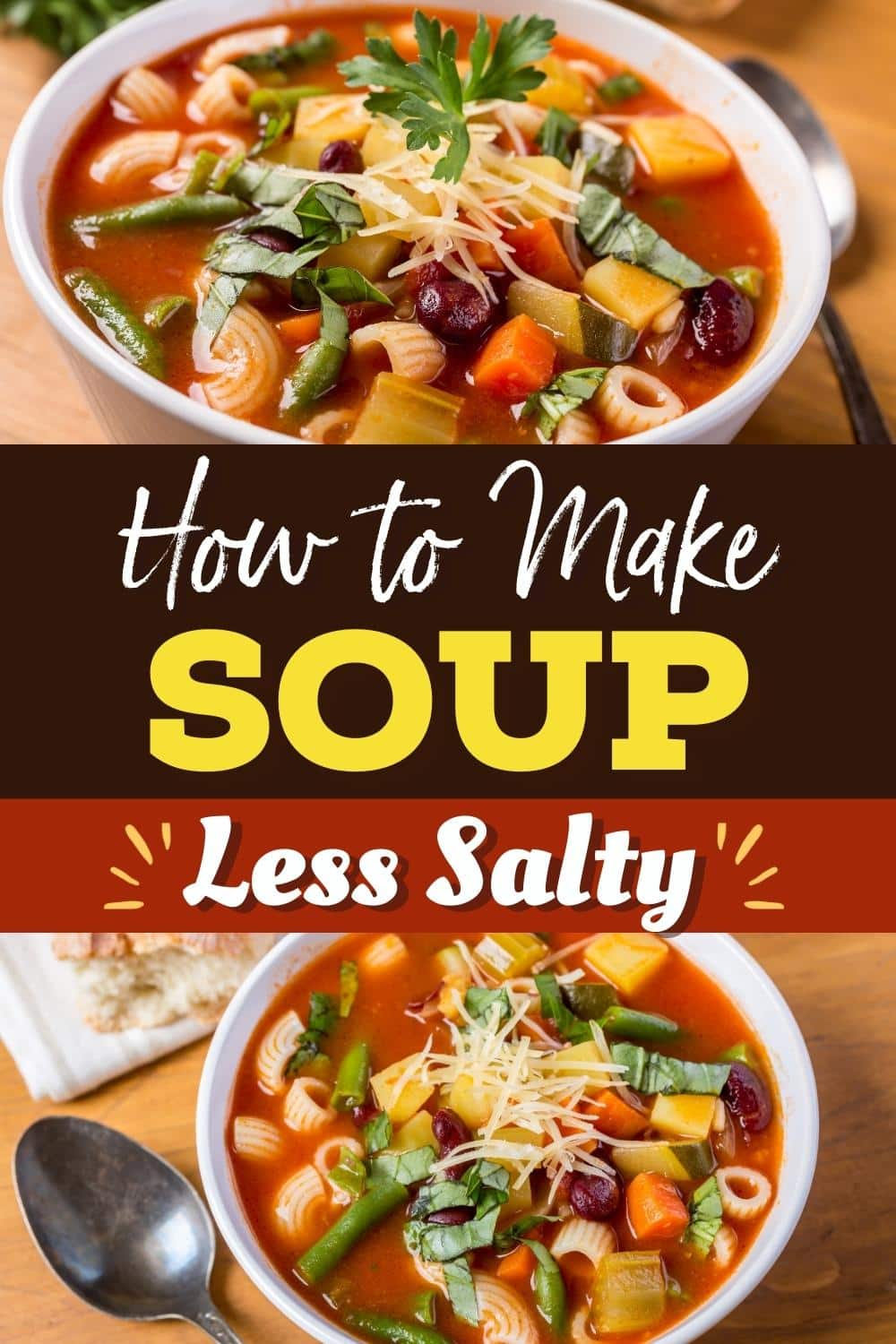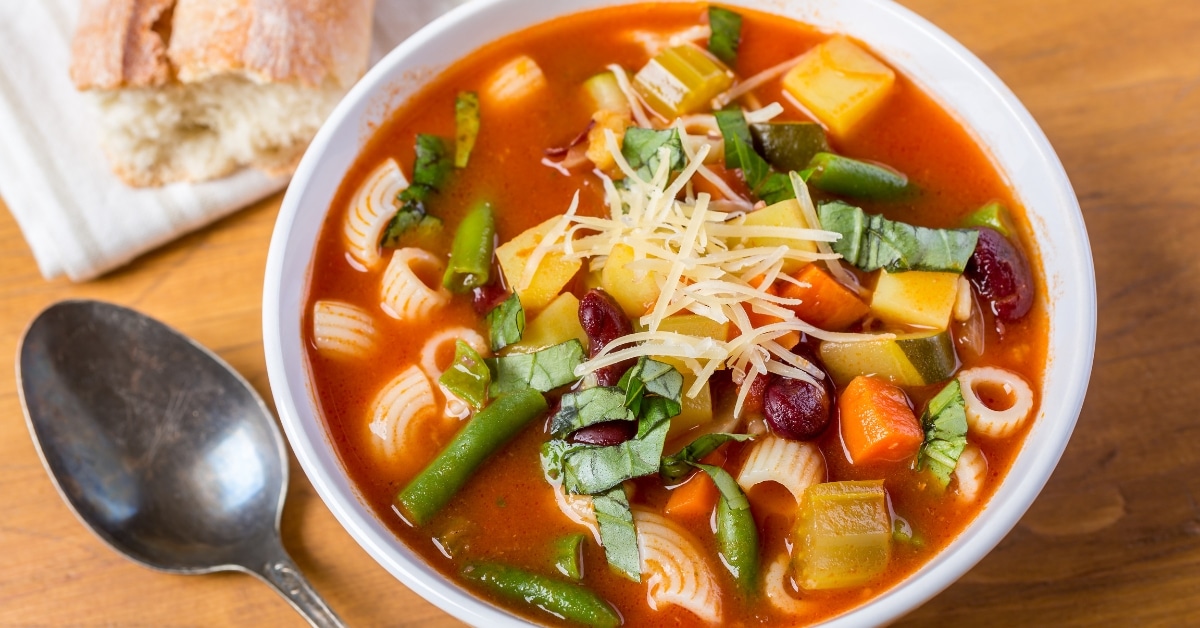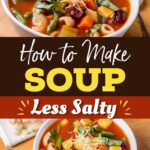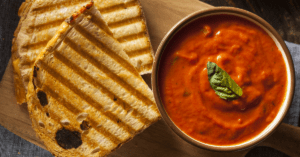To make soup less salty, there are some easy tricks you can try.
These include diluting it, increasing the volume, and adding potatoes, to name a few.
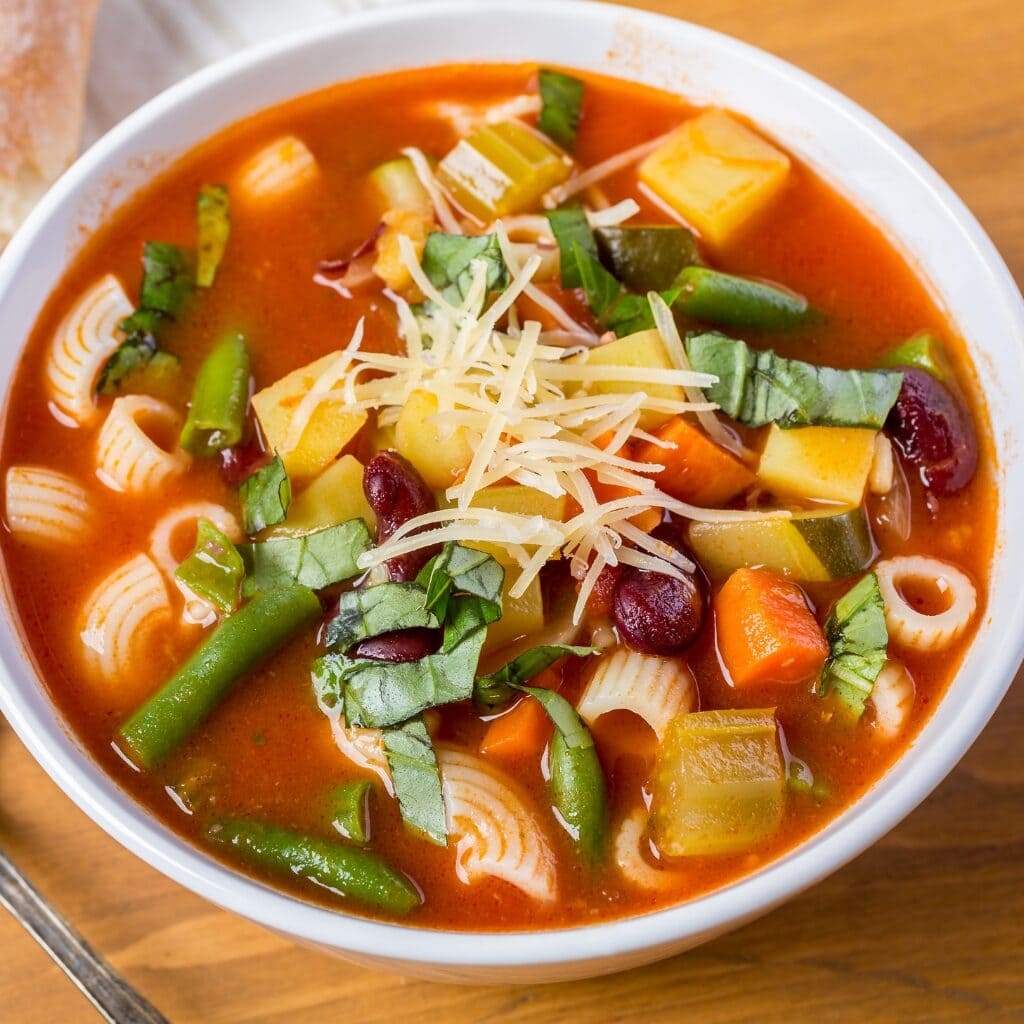
You can also add acid, starch, dairy, or tomatoes to tone down the salt.
These tips are guaranteed to come to your rescue when faced with blaring saltiness. So read on to learn how to make soup less salty!
How to Make Soup Less Salty

1. Dilute the Soup
This is the most straightforward way to fix soup that’s too salty. Simply add more liquid to the soup to dilute the salt content.
You can use water, broth, stock (ensure it’s unsalted), or vegetable juice. Or try a splash of wine or beer. This adds complexity to enhance the flavors.
Don’t add so much liquid that your soup loses all its flavor. Take it slow and add a little liquid, stir, then taste. If it’s still too salty, add a bit more.
2. Increase the Volume
This method is similar to dilution. But you’re also increasing the amount of the other ingredients. This will help balance the soup’s flavors.
For instance, if you’re making a chicken noodle soup, add more chicken, noodles, and vegetables. It will not only dilute the salt but will also amplify the taste.
This will bulk up the soup, preserving its flavors and textures.

3. Add Potatoes
Potatoes absorb salt, which can help balance soup’s flavors. Add a whole peeled potato into large chunks. Then, add them to your salty soup.
Let the soup simmer for 15-20 minutes, then remove the potato pieces.
Remember, while potatoes absorb some salt, they’re not magic salt sponges. This method is best used with other techniques.
While potatoes can help, they’ll be ineffective if a soup is excessively salty. Combine this method with more liquid or other ingredients to further dilute the saltiness.
4. Add Acid
Acids such as vinegar or lemon juice help balance out the saltiness. Add a small amount, taste the soup, and add more if needed.
The acid also introduces a new flavor dimension, so choose one that complements the other flavors. It can make the overall flavor profile of the soup more robust and interesting.
A squeeze of fresh lemon will do the trick in deeply savory soups. A dash of red wine vinegar enhances tomato soup, which naturally contains acid.
Adding tangy and acidic garnishes like lemon zest, lime slices, or unflavored yogurt also works.
Don’t forget to incorporate fresh elements like herbs to reduce the salty taste as well.
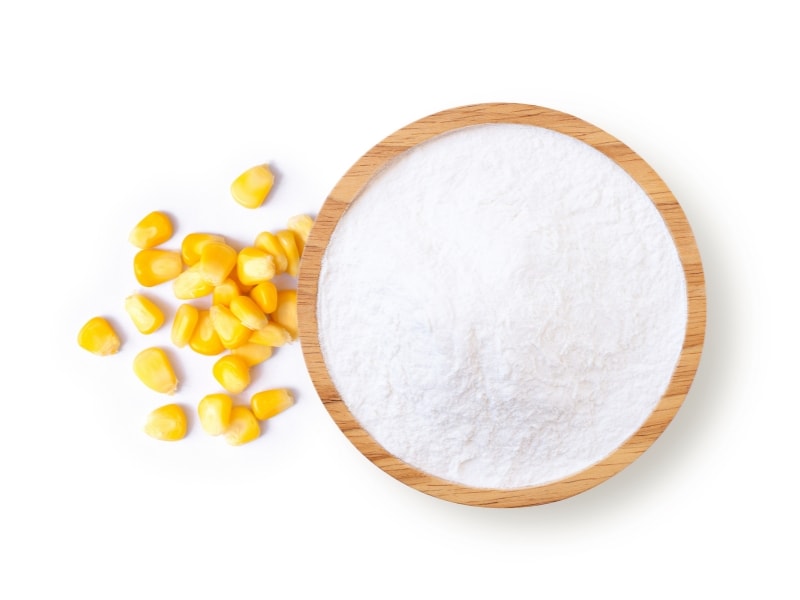
5. Add a Starch
While it’s a common belief that starches absorb salt, they don’t soak up much. However, they absorb water. This process can help distribute the salty flavor evenly throughout the soup.
If it makes sense for your recipe, add rice, pasta, or even a grain like barley. The extra flavor can help offset the intense saltiness.
Adding starch will also change the texture and thickness of the soup. Be sure to choose a starch that complements the existing ingredients.
6. Add Dairy
Dairy products are high in fat. The richness of the fat coats the tongue and lessens the perception of saltiness.
It doesn’t remove the salt but can help balance the flavors. It also makes the soup creamier and more decadent.
Remember that while adding dairy can help reduce saltiness, it also changes the soup’s texture.
This method is perfect for soups that are already creamy or blended. Or use it for soups where a creamy element is a welcome addition.
Always add dairy products slowly, stirring and tasting as you go. This method will prevent the soup from becoming too rich or creamy.
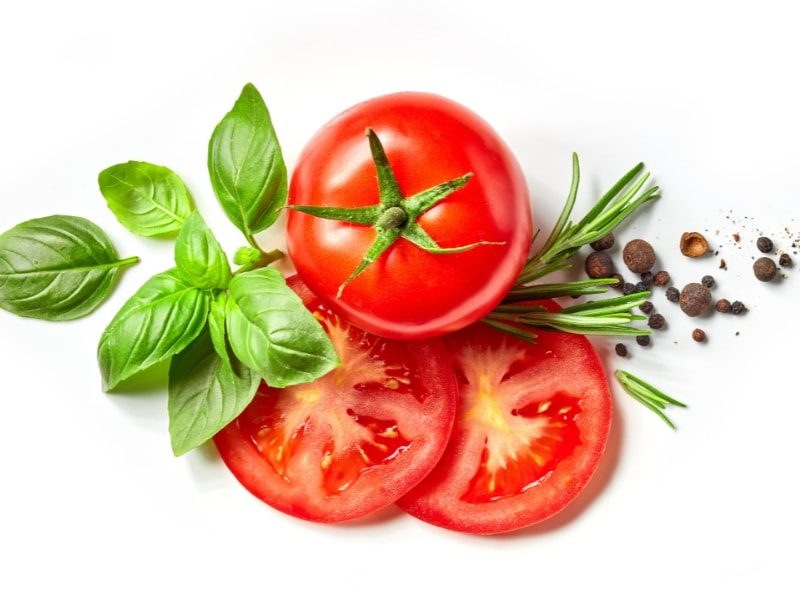
7. Add Tomatoes
Tomatoes have a natural acidity that can counterbalance the taste of too much salt. They don’t remove or absorb salt. But the tartness helps offset the saltiness.
They also have a bright flavor that can stand up to and complement a salty soup. Like adding any other ingredient, they increase the volume of your soup. The addition dilutes the salt concentration, making the overall taste less salty.
However, ensure you’re using low-sodium or no-salt-added canned tomatoes if you’re not using fresh ones.
Each of these methods has its strengths and complements different recipes. And the best approach is to use a combination of different strategies.
The key is to taste your soup as you go to ensure you’re creating a balanced, flavorful soup.
